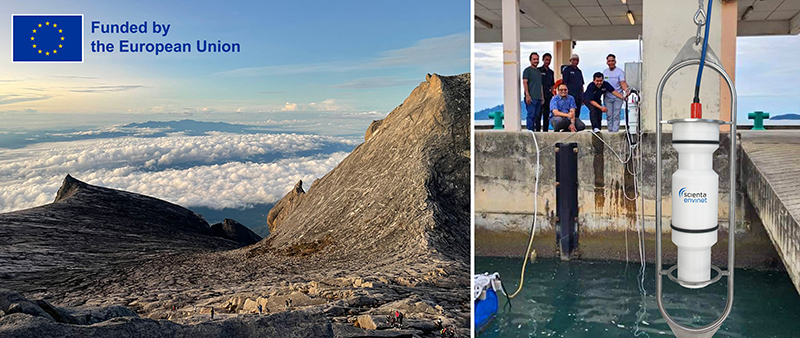The ASEAN monitoring network stands for diversity
Part 5: Malaysia
In our ongoing reporting on the project "Establishing a Regional Early Warning Radiation Monitoring Network and Data Exchange Platform in ASEAN", funded by the European Union and implemented by Scienta Envinet, we have highlighted the outstanding innovations in four of the participating ASEAN countries. After recently presenting the project in the Philippines, a country characterized by its numerous islands, just like the RDEP system, we are now turning our attention to a country that also boasts an abundance of unforgettable island worlds:
Malaysia!

Malaysia is blessed with a breathtaking diversity that includes its exceptional geographical location, a number of different ethnic groups and the rich flora and fauna. From the majestic Mount Kinabalu and the vibrant streets of Kuala Lumpur to the unspoiled islands of Langkawi and the bustling markets of Penang, Malaysia offers a wealth of impressions and experiences. This unique blend makes Malaysia such a truly remarkable country.
A modern measuring network to monitor environmental radiation is thus of vital importance. Before rolling out the new stations, Atom Malaysia already operated a radiation monitoring network; this has now been upgraded with seven new MIRA gamma dose rate monitoring stations and one spectroscopic TUNA station, which measures underwater. Needless to say, the stations' robust design makes them more than able to cope with Malaysia's climate challenges, ranging from tropical storms to intense sunlight. They work with our Network Monitoring Center Software NMC and use our ENVINET RADMON service with integrated national roaming to ensure reliable data transmission via LTE to Atom Malaysia in Dengkil, Selangor, from even the most remote areas.
Given Malaysia's high marine biodiversity, using TUNA for water detection is particularly crucial. Did you know that, as standard, NMC is programmed with algorithms that increase the detection sensitivity of this probe by factors compared to conventional measuring technology? And, at the same time, they enhance the resolution of the detector, typically from 7% to roughly 3%? These algorithms are called "Deconvolution" and "FSA – Full spectrum analysis". One uses the response function of the detector to restore the real photon spectrum, while the other reconstructs the measured spectrum using simulated spectra of the nuclides that are potentially involved. Once the new NMC version 4.7.0 is rolled out in spring, this will be fully automated using the DAISY module. Complicated? No. Impressive? Yes.

Thanks to this technology and the new devices, Malaysia and most of the ASEAN region are now fully perfectly equipped to monitor radiological changes in the environment at an early stage and take appropriate action. Whether you want to ensure that your region or facility is also optimally prepared for radiological hazards or simply find out more about Deconvolution and FSA in NMC, our experienced team will be happy to develop customized solutions for your specific monitoring requirements and demonstrate NMC's unique capabilities. Do not hesitate to contact us at
Best regards
Your Scienta Envinet Team